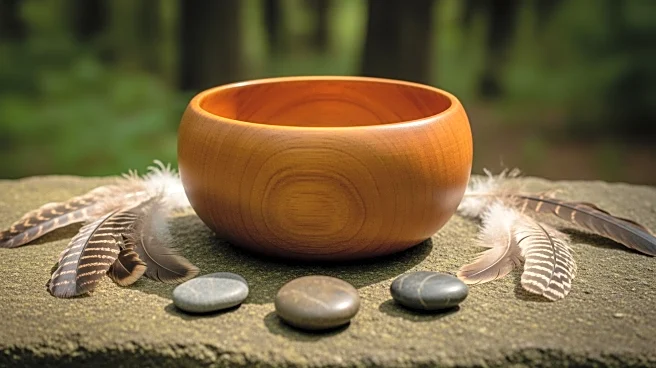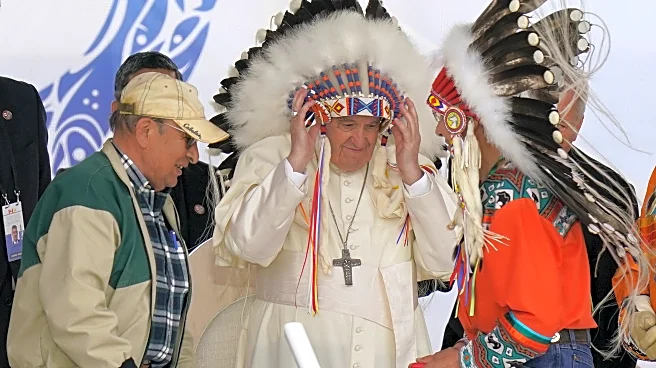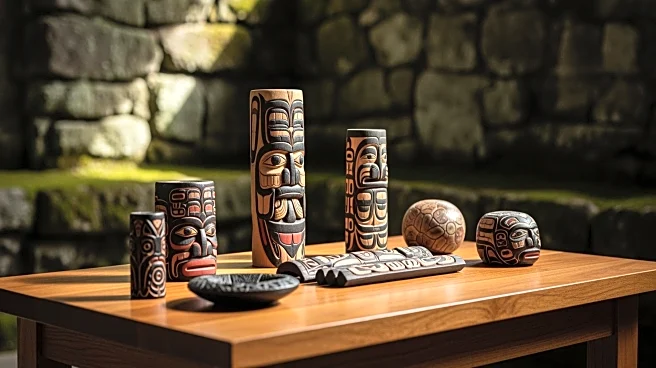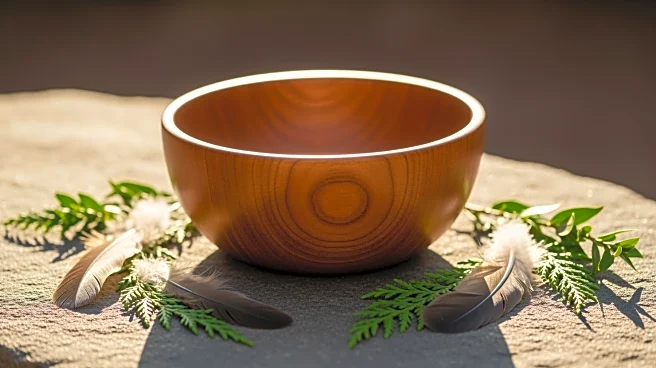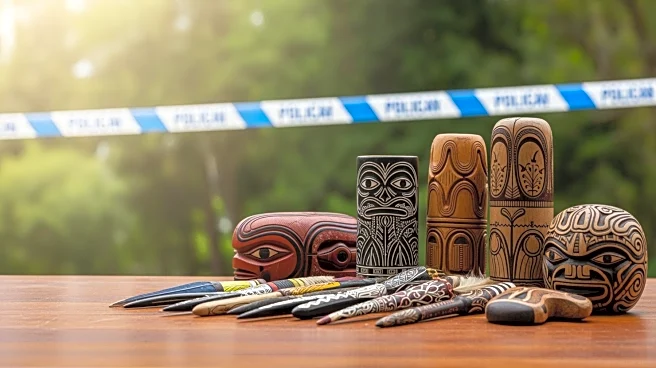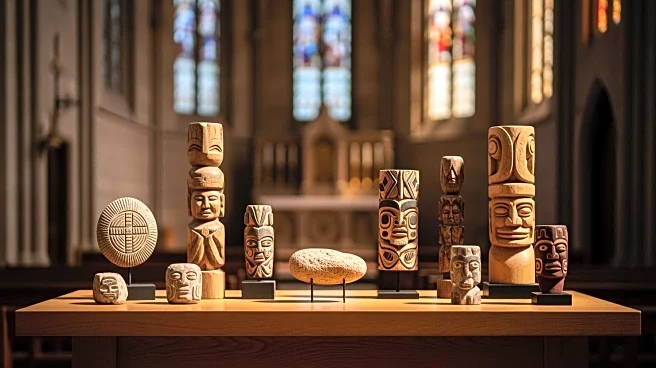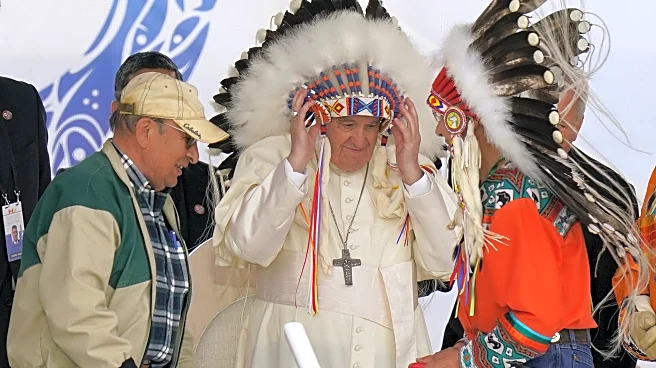What's Happening?
The Vatican has returned 62 artifacts from its ethnographic collection to Indigenous peoples in Canada, as part of the Catholic Church's efforts to address its colonial past. The artifacts, including an iconic
Inuit kayak, were given to the Canadian Conference of Catholic Bishops, which plans to return them to Indigenous communities. The items are expected to arrive in Montreal on December 6 and will be initially housed at the Canadian Museum of History in Ottawa. This move follows Pope Francis's apology to Indigenous leaders for the church's role in Canada's residential schools and marks a significant step in the restitution of cultural goods taken during colonial periods.
Why It's Important?
The return of these artifacts is a crucial step in the reconciliation process between the Catholic Church and Indigenous communities. It acknowledges the historical injustices and cultural suppression faced by Indigenous peoples due to colonial policies. This gesture supports ongoing efforts toward truth, justice, and reconciliation, and highlights the importance of preserving and valuing Indigenous heritage. The return of these items also sets a precedent for other institutions holding cultural artifacts to consider restitution, fostering dialogue and respect between cultures.
What's Next?
The Canadian Museum of History will work with Indigenous experts to establish the provenance of any artifacts with uncertain origins. The return of these items is part of a broader effort by the Vatican to address its colonial past, including the repudiation of the 'Doctrine of Discovery.' The church aims to continue its dialogue with Indigenous communities and support their efforts to pass on cultural heritage to future generations. This process may lead to further restitutions and collaborations between the Vatican and Indigenous groups.
Beyond the Headlines
The return of these artifacts raises questions about the power dynamics involved in their original acquisition and the broader implications of cultural restitution. It challenges museums and collectors to reconsider the ethical dimensions of holding cultural items from marginalized communities. This development may inspire other institutions to engage in similar restitution efforts, promoting cultural understanding and healing.


